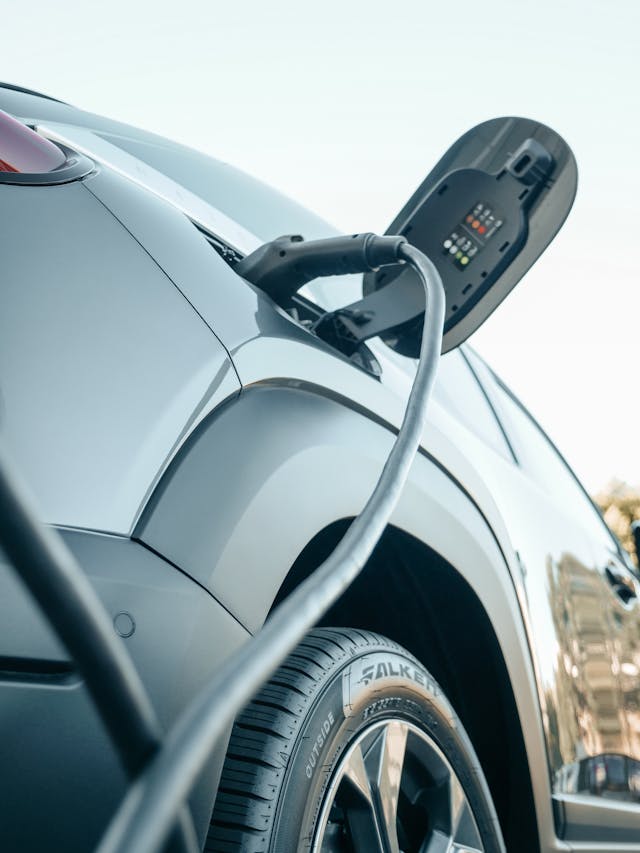
Millions of Charging Stations are Missing Throughout Europe but, in Italy, They’re Growing in Numbers
The advent of electric cars promised a revolution in the automotive sector, promoting the transition to a more sustainable, low-carbon future. However, a recent report from the European Automobile Manufacturers’ Association (ACEA) highlights an alarming gap between the current availability of public charging points and what will be needed to meet CO2 emission reduction targets.
According to the report, between 2017 and 2023, sales of electric cars grew three times faster than the installation of charging points. This gap is slowing the process of large-scale adoption of electric cars, hampering efforts to reduce CO2 emissions in the European Union. Sigrid de Vries, director general of Acea, underlined the importance of widespread availability of public charging infrastructures to achieve the ambitious European objectives of reducing CO2 emissions.
Currently, just over 150,000 public charging points are installed in the EU, with an average installation rate of less than 3,000 per week. However, the European Commission has set a target of installing 3.5 million charging points by 2030, calling for an annual installation rate of around 410,000 points (almost 8,000 per week), almost three times the current rate. Despite this gap at the European level, Italy stands out for its positive progress in the installation of public charging points. With over 54,000 charging points installed as of March 31, the country has recorded an increase of 31.5% compared to 2023. In particular, in the last two years, the number of charging points has practically doubled, showing a significant commitment towards electric mobility.
The Italian regions with the highest number of charging points include Lombardy, Piedmont, Veneto, Lazio and Emilia-Romagna, while the main cities with charging infrastructure include Rome, Milan, Naples, Turin and Brescia. Furthermore, Italian motorways are equipped with around 942 charging points, with the majority of them being fast direct current types. Italy’s extensive electric charging infrastructure has been supported primarily by private investment, but continued growth of the electric car sector, including through adoption in corporate fleets, is expected to play a critical role in maintaining and expanding this economic advantage .
As Europe strives to reduce CO2 emissions through the adoption of electric vehicles, it is vital that priority is given to building public charging infrastructure. Only with a high availability of charging points will it be possible to ensure a smooth transition towards a future of sustainable and low-carbon mobility. Despite this encouraging progress, significant challenges remain to be addressed to ensure a seamless transition towards a fully equipped electric car fleet. One of the main obstacles is the need for a larger and more accessible public charging infrastructure.
The widespread diffusion of public charging points is essential to encourage the adoption of electric cars by consumers. Without an adequate network of charging infrastructure, potential buyers may be discouraged from purchasing an electric vehicle for fear of running out of power while traveling. Therefore, it is essential to continue investing in building new charging points and expanding existing ones. Furthermore, it is important to consider the diversity of needs of electric drivers. While fast and ultra-fast charging points are key to enabling long journeys and reducing waiting times, low-power charging infrastructure in urban and suburban areas is crucial to enabling charging overnight or during daily activities.
Increasing public charging infrastructure will not only drive consumer adoption of electric vehicles, but will also have a positive impact on the economy and employment. The construction and maintenance of charging points will require significant investment and create new job opportunities in the renewable energy and technology sector. Expanding electric charging infrastructure will help reduce dependence on fossil fuels and mitigate the effects of climate change. With fewer petrol and diesel powered vehicles on the roads, emissions of CO2 and other air pollutants will decrease, improving air quality and reducing the overall environmental impact of the transport sector.
To maximize the potential of electric cars and ensure a smooth transition towards more sustainable mobility, a coordinated commitment from governments, industries and local communities is needed. Investments in public charging infrastructure should be accompanied by incentivized policies, such as subsidies for the purchase of electric vehicles and tax breaks for electric conversion. Italy has made significant progress in building public charging infrastructure, but it is necessary to continue investing and innovating to address the remaining challenges and ensure a seamless transition towards accessible and sustainable electric mobility. Only with a shared commitment and a coordinated action plan will it be possible to realize the full potential of the electric revolution in the transport sector.
Alessandro Fiorentino



 Subscribe
Subscribe